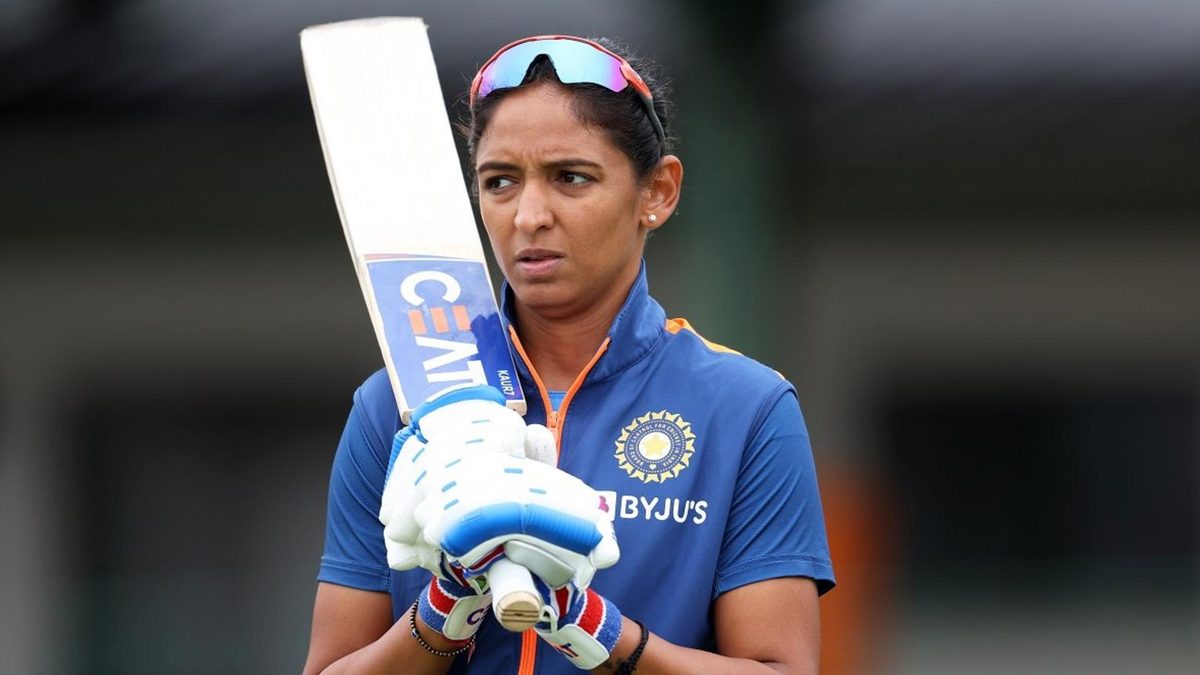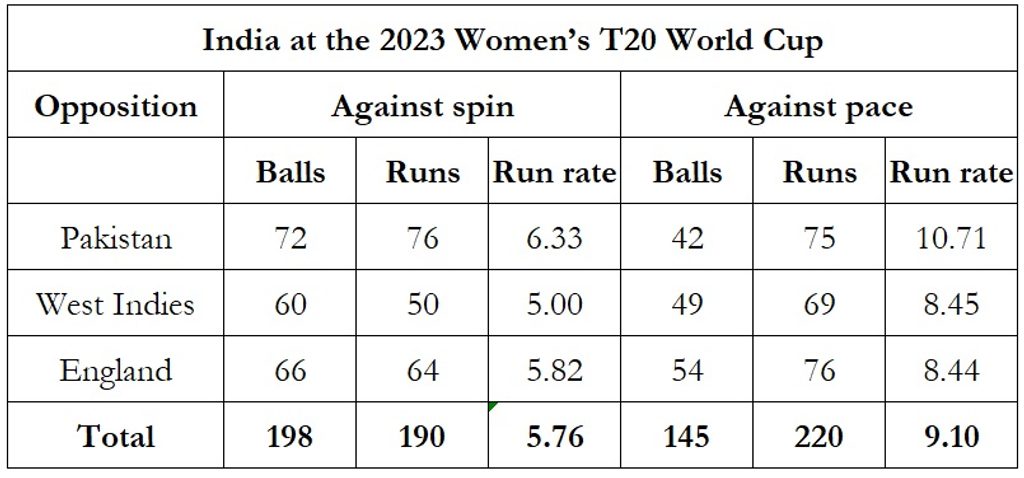
Expectations were high when India locked horns with England in the Women’s T20 World Cup league match, with over two million tuning in on the live streaming app in India. In a close affair, England snatched a victory from India’s clutches by 11 runs in Gqeberha.
India’s Achilles’ Heel
The conditions were not a hundred percent ideal for the chase that night. The outfield was a bit wet, and the wind did not help India’s cause either. While they cannot control these things, India must look into a few things ahead of the must-win game against Ireland.
Against England, India played 51 dot balls, significantly more than England’s 40. While teams have used the dot-ball-and-boundary-hitting strategy to success, India could not accelerate off the other deliveries either.
Only two Indian batters – Smriti Mandhana and Richa Ghosh – scored at quicker than a run a ball against England. The other batters did not stay long enough to match up with the dots.
The difference became particularly stark between overs seven and 11, over the course of which India managed 24 runs, 19 fewer than England’s 43, despite playing out exactly the same number of dot balls (10). The phase contributed significantly in the 11-run margin.
In particular, India struggled more against the spinners, especially Sophie Ecclestone, off whom they failed to hit a single boundary: she conceded 12 singles and a two in her four overs. They did hit Charlie Dean for three fours, but there was a solitary six off Sarah Glenn.
In fact, India have found it difficult against the spinners right from the start of this tournament, something that got buried amidst their wins.
Against the West Indies, India were chasing a target of 119, lower than they had to in the other games. Therefore, their struggle against Hayley Matthews and Karishma Ramharack did not hurt them much. Against the duo, they ended up playing 28 dots in four overs, managing only one boundary (off Ramharack).
In the first match against Pakistan, special efforts from Jemimah Rodrigues and Ghosh got them over the line. They played the spinners comparatively better in this game but struggled against Nashra Sandhu, who conceded 11 singles and two twos in her four overs.
On the whole, the Indian team scored at only 5.76 an over against spin at this World Cup. The same batters have done well against fast bowlers and medium pacers, scoring at 9.10.

Despite the defeat against England, India are still firm favourites for a semi-final berth as long as they beat Ireland on Monday. However, once there, their weakness against spin will be tested by stronger oppositions.
New Zealand’s problems
Despite losing comprehensively to South Africa and Australia, New Zealand have turned things with resounding wins against Bangladesh and Sri Lanka. It is difficult to point out one particular reason for New Zealand’s twin defeats. There is so much to look into, starting from the team selection to the form of the current players.
When Suzie Bates got out for a duck against Australia and South Africa, other batters could not stand up on the day, and the team failed to reach even 100 in either game.
During the post-match conference, captain Sophie Devine questioned the quality of New Zealand’s domestic game. “If I’m being brutally honest, I’m not sure if it’s preparing us for international cricket, and you’re seeing now, obviously, the WBBL, the Hundred and now the WPL, they’re highly competitive tournaments, and they’re preparing players. I’m not sure it’s at the same standard as those other competitions, so, look, I think everything’s going to be picked apart, and rightly, so when we get back to New Zealand.”
If Super Smash is indeed the main criterion for selection, it is surprising to see how several top run-getters missed World Cup berths. Notably, the players selected for the T20 World Cup did feature in at least five games. Devine suffered from a leg injury and did not play in the second half of the tournament.
Of the top 14 run-scorers of the Super Smash, only two – Suzie Bates (293 runs, strike rate 129) and Amelia Kerr (244 runs at 121), the automatic choices – made it to the squad. Of the next three, only Bernadine Bezuidenhout (136 runs at 110) made it. None of the top eight wicket-takers is part of the squad, while of the top 16, only Jess Kerr (10 wickets, economy 5.57) was picked.
Devine’s words are as much a matter of concern as are the selectors not considering the top performers of the domestic circuit.
New Zealand currently stand at second place in the points table. Australia have qualified and Sri Lanka have been eliminated, so New Zealand (four points, NRR +0.138) need to finish above South Africa (two points, NRR +0.685). In other words, they need Bangladesh to defeat South Africa to make it to the top four.
A word on West Indies and Sri Lanka
Hayley Matthews has the toughest job compared to other captains in this T20 World Cup. Her role got harder when Stafanie Taylor picked up an injury and couldn’t play in the final two games.
Despite losing Taylor, the team found a way to win their last two games to give themselves a mathematical chance for the knockouts. After losing to India and England, they defeated Ireland and Pakistan with the help of Matthews, who led the way with runs, wickets, fielding, even DRS!
Matthews has scored close to 26 percent of West Indies’ runs in the tournament. She also has the joint-second most wickets for the side (4).
There is no doubt that the team is pretty much talented and can pull off victories, but the lack of proper domestic structure and experience has let the team down very badly.
Since the start of 2020, the West Indies has managed to play only 32 T20Is, fewer than most of the top teams. They do not have a strong domestic structure like Australia to make up for it.
The same holds for Sri Lanka, who did not play a single international game during the pandemic, or since last year’s Asia Cup campaign. Captain Chamari Athapaththu addressed the point in the post-match presentation: “I have only a few senior players in the team. A lot of girls are very young, and they have not played a lot of cricket. They don’t have the experience for this kind of game. If we take too much pressure on our shoulders, the result comes like this.”
Despite their lack of fixtures, Sri Lanka still did a decent job to defeat South Africa in the opening game. They also beat Bangladesh before defeats against Australia and New Zealand knocked them out of the tournament.








